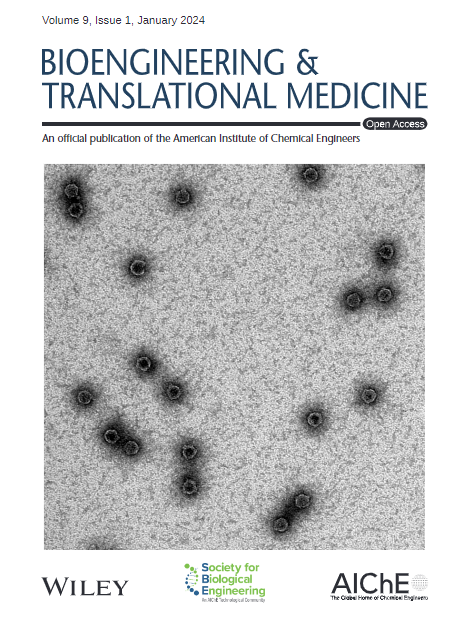Multi‐modal screening for synergistic neuroprotection of mild extremely preterm brain injury
IF 5.7
2区 医学
Q1 ENGINEERING, BIOMEDICAL
引用次数: 0
Abstract
Preterm brain injury affects both white and gray matter, including altered cortical development and gyrification, with associated neurodevelopmental sequelae such as cerebral palsy and learning deficits. The preterm brain also displays regionally heterogeneous responses to both injury and treatment, suggesting that drug combinations may be needed to provide global neuroprotection. We developed an extremely preterm‐equivalent organotypic whole hemisphere (OWH) slice culture mild injury model using the gyrencephalic ferret brain to probe treatment mechanisms of promising therapeutic agents and their combination. Regional and global responses to injury and treatment were assessed by cell death quantification, machine learning‐augmented morphological microglia assessments, and digital transcriptomics. Using two promising therapeutic agents, azithromycin (Az) and erythropoietin (Epo), we show minimal neuroprotection by either therapy alone, but evidence of synergistic neuroprotection by Az*Epo both globally and regionally. This effect of Az*Epo involved augmentation of transcriptomic responses to injury related to neurogenesis and neuroplasticity and downregulation of transcripts involved in cytokine production, inflammation, and cell death. With the increasing need to develop therapies for extremely preterm brain injury, the ferret OWH slice culture model provides a high‐throughput platform to examine combinations of therapeutics as part of a preclinical therapeutic pipeline.轻度极早产儿脑损伤协同神经保护的多模式筛选
早产儿脑损伤会影响白质和灰质,包括皮质发育改变和脑回化,并伴有相关的神经发育后遗症,如脑瘫和学习障碍。早产儿的大脑也对损伤和治疗表现出区域异质性反应,这表明可能需要药物联合来提供全局神经保护。我们建立了一种极早产等效器官型全半球(OWH)切片培养的雪貂脑轻度损伤模型,以探讨有前景的治疗药物及其联合治疗的机制。通过细胞死亡量化、机器学习增强形态学小胶质细胞评估和数字转录组学评估对损伤和治疗的区域和整体反应。使用两种有前景的治疗药物,阿奇霉素(Az)和促红细胞生成素(Epo),我们显示单独治疗的神经保护作用很小,但azo *Epo在全球和区域都有协同神经保护的证据。Az*Epo的作用包括增强与神经发生和神经可塑性相关的损伤的转录组反应,以及下调与细胞因子产生、炎症和细胞死亡有关的转录。随着对极早产儿脑损伤治疗方法的需求不断增加,雪貂OWH切片培养模型提供了一个高通量的平台,可以作为临床前治疗管道的一部分来检查治疗方法的组合。
本文章由计算机程序翻译,如有差异,请以英文原文为准。
求助全文
约1分钟内获得全文
求助全文
来源期刊

Bioengineering & Translational Medicine
Pharmacology, Toxicology and Pharmaceutics-Pharmaceutical Science
CiteScore
8.40
自引率
4.10%
发文量
150
审稿时长
12 weeks
期刊介绍:
Bioengineering & Translational Medicine, an official, peer-reviewed online open-access journal of the American Institute of Chemical Engineers (AIChE) and the Society for Biological Engineering (SBE), focuses on how chemical and biological engineering approaches drive innovative technologies and solutions that impact clinical practice and commercial healthcare products.
 求助内容:
求助内容: 应助结果提醒方式:
应助结果提醒方式:


